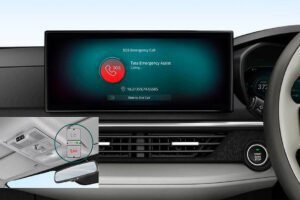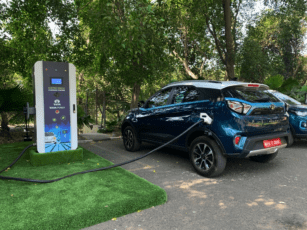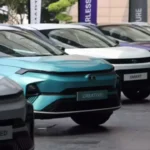Key Highlights:
- Real-world challenges faced by Tata Nexon EV owners.
- Common issues with range, service, and charging infrastructure.
- Battery performance and software glitches over time.
- Essential tips for future owners to plan a smoother experience.
The Tata Nexon EV has captured the attention of eco-conscious buyers with its blend of style, performance, and affordability. While the electric SUV offers several advantages, such as reduced running costs and a quieter driving experience, it is not without flaws. Tata Nexon EV Owners have reported various issues that can affect the overall ownership experience.
This article presents the top 10 challenges Nexon EV owners have encountered. If you’re considering this vehicle, understanding these potential hurdles can help you decide whether it’s the right EV for you.
1. Range Anxiety in Practical Use
Many owners have expressed concerns about the difference between the claimed range and the actual distance covered. Under ideal conditions, the Tata Nexon EV promises over 300 km on a full charge. However, real-world driving scenarios, including traffic and weather changes, often reduce the range to around 180-220 km. For highway drives, the range can drop further, intensifying range anxiety for long-distance travelers.
2. Charging Issues at Public Stations
While the Nexon EV supports fast charging, many public chargers aren’t as efficient as expected. Owners have encountered:
- Waiting times at public charging stations.
- Charging downtime or non-functional stations.
It’s essential to plan routes with verified charging stations to avoid inconvenience.
Also Read: Tata Nexon EV Buying Guide: Everything You Need to Know
3. Service Network Limitations
While Tata Motors is actively expanding its EV service network, some owners still feel that service availability, especially in smaller towns, is limited. In many cases, EV-trained technicians are not always available, leading to delays in servicing or troubleshooting. The dependency on authorized service centers adds further pressure, leaving owners frustrated when immediate assistance is required.
4. Battery Performance Decline over Time
As with any EV, battery degradation is a concern among Tata Nexon EV owners. Some report a noticeable drop in range after a couple of years of ownership. Although Tata offers a warranty on the battery, degraded performance may still affect the user experience. A battery replacement outside warranty coverage can be quite expensive, making it essential to monitor battery health regularly.
5. Infotainment System Bugs
The Nexon EV’s infotainment system, while feature-rich, has been prone to software glitches. Owners have shared experiences of unexpected reboots and frozen screens during navigation. Inconsistent Bluetooth connectivity is another common complaint, making it difficult to seamlessly connect smartphones. Software updates do address some issues, but they don’t always arrive promptly.
Also Read: Ather Energy vs Traditional Scooters: Cost and Performance Comparison
6. Learning Curve with Regenerative Braking
The regenerative braking system, designed to improve efficiency, is often challenging for first-time EV drivers. Some owners find the braking response inconsistent, especially when switching from a conventional vehicle. The sudden deceleration when the regenerative system kicks in can be unsettling. Adjusting to this feature takes time, but it plays a crucial role in extending battery life.
7. Higher Insurance Premiums
Another challenge for owners is the high insurance cost associated with electric vehicles. Many insurers charge a premium for EVs, reflecting their relatively new market status and higher repair costs. In addition, comprehensive insurance policies with battery coverage tend to be more expensive, further adding to ownership costs. Prospective buyers should factor this in while budgeting.
8. Noise Levels at High Speeds
Unlike many EVs that offer silent rides, some Nexon EV owners have noticed cabin noise when driving at higher speeds.
- Road and wind noise become noticeable above 80-100 km/h.
- Tyre noise can also seep into the cabin on rough roads.
Upgrading to better tyres or additional cabin insulation could help.
9. Limited Boot Space for Travel Needs
The Nexon EV offers decent boot space for city commutes, but for long trips, the storage feels limited. Some owners find it difficult to accommodate larger suitcases due to the battery’s placement, which takes up space. A practical solution is installing roof carriers, but that comes with additional costs. Those planning frequent road trips should consider this constraint.
10. Resale Value Uncertainty
The resale value of the Nexon EV is another area of concern for owners. Since EV technology is evolving rapidly, older models may not hold their value well. Buyers are often hesitant about purchasing second-hand electric vehicles, primarily due to battery health concerns. Owners planning to sell the car in the future need to keep track of market trends and maintain the battery’s condition to ensure better resale prospects.
ELCTRIK Speaks
The Tata Nexon EV offers several benefits, but it’s not free from challenges. From range issues to service limitations, owners have raised valid concerns. These issues highlight the importance of setting realistic expectations and preparing for potential hurdles in advance. Despite these drawbacks, the Nexon EV remains a good option for those seeking an affordable electric SUV. Future buyers can enjoy a smoother experience by familiarizing themselves with the vehicle’s quirks and planning their usage accordingly.









